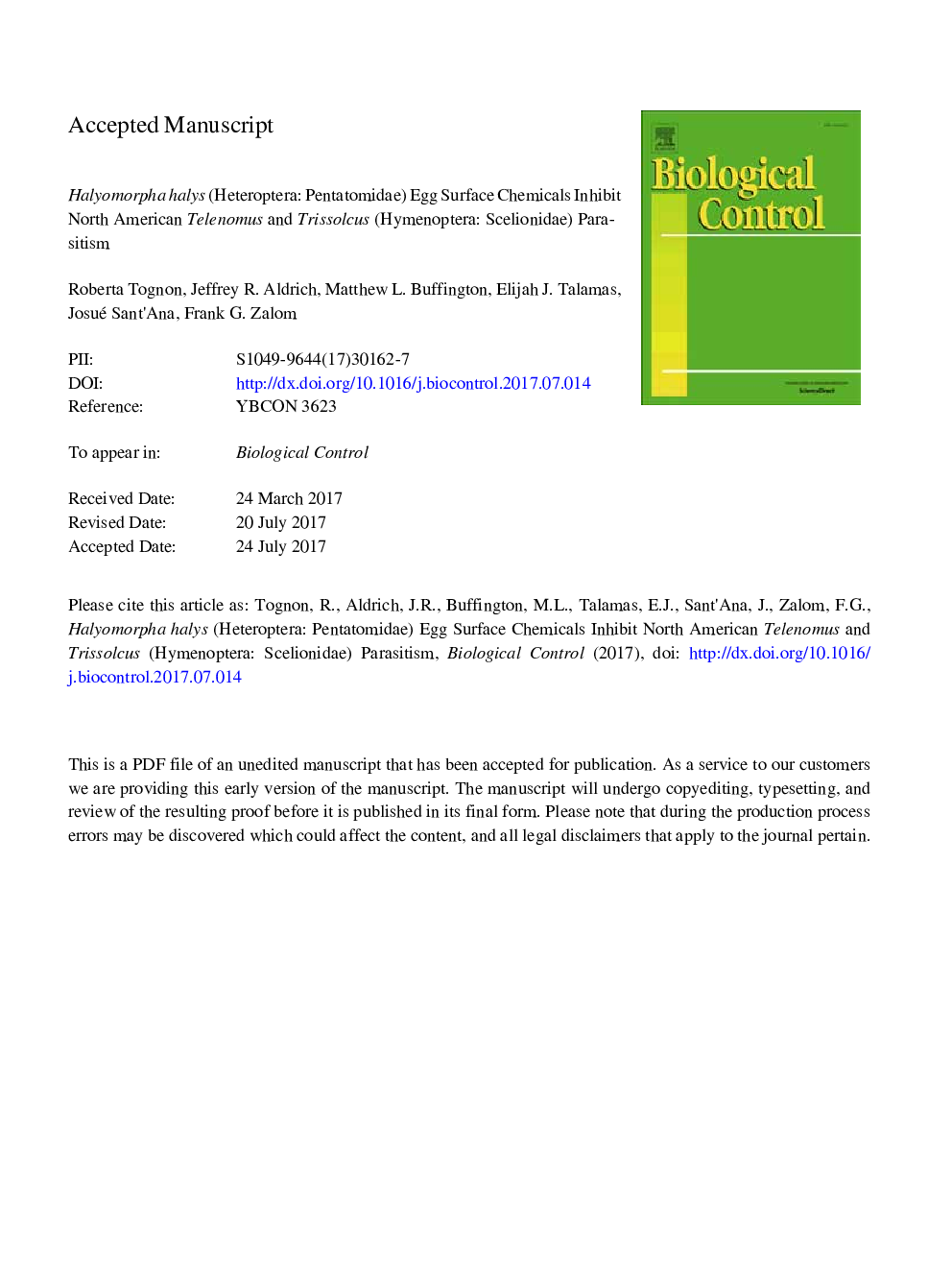| Article ID | Journal | Published Year | Pages | File Type |
|---|---|---|---|---|
| 5760723 | Biological Control | 2017 | 23 Pages |
Abstract
Halyomorpha halys (Stål) (Heteroptera: Pentatomidae), the brown marmorated stink bug (BMSB), is an invasive pest in the U.S., where it has been largely unaffected by natural enemies. Using rinsed and unrinsed, frozen and fresh egg masses in laboratory bioassays, we studied how surface chemicals on the eggs of H. halys might suppress parasitism by the native North American scelionid parasitoids, Telenomus podisi Ashmead and Trissolcus erugatus Johnson (Hymenoptera: Scelionidae). Parasitism of fresh-rinsed and fresh-unrinsed H. halys eggs was not observed in laboratory bioassays. However, both Te. podisi and Tr. erugatus parasitized significantly more frozen-rinsed eggs (59.6% and 71.1%, respectively) than frozen-unrinsed eggs (27.9% and 46.5% respectively). Some of these parasitoids of both species that successfully emerged from frozen-rinsed and frozen-unrinsed eggs were subsequently able to develop in fresh-unrinsed H. halys eggs for at least four generations, with parasitism starting around 30% and 40% to Te. podisi and Tr. erugatus respectively, but decreased on subsequent ones. We conclude that the success of indigenous egg parasitoids in successfully parasitizing the invasive H. halys in North America may be initially limited by compounds present on the surface of BMSB eggs, and that native parasitoids can learn to recognize the exotic BMSB eggs under specific circumstances. Knowledge of the semiochemistry of egg parasitism increases the likelihood that it may be possible to select native parasitoids for biological control of H. halys and other invasive pests.
Related Topics
Life Sciences
Agricultural and Biological Sciences
Agronomy and Crop Science
Authors
Roberta Tognon, Jeffrey R. Aldrich, Matthew L. Buffington, Elijah J. Talamas, Josué Sant'Ana, Frank G. Zalom,
